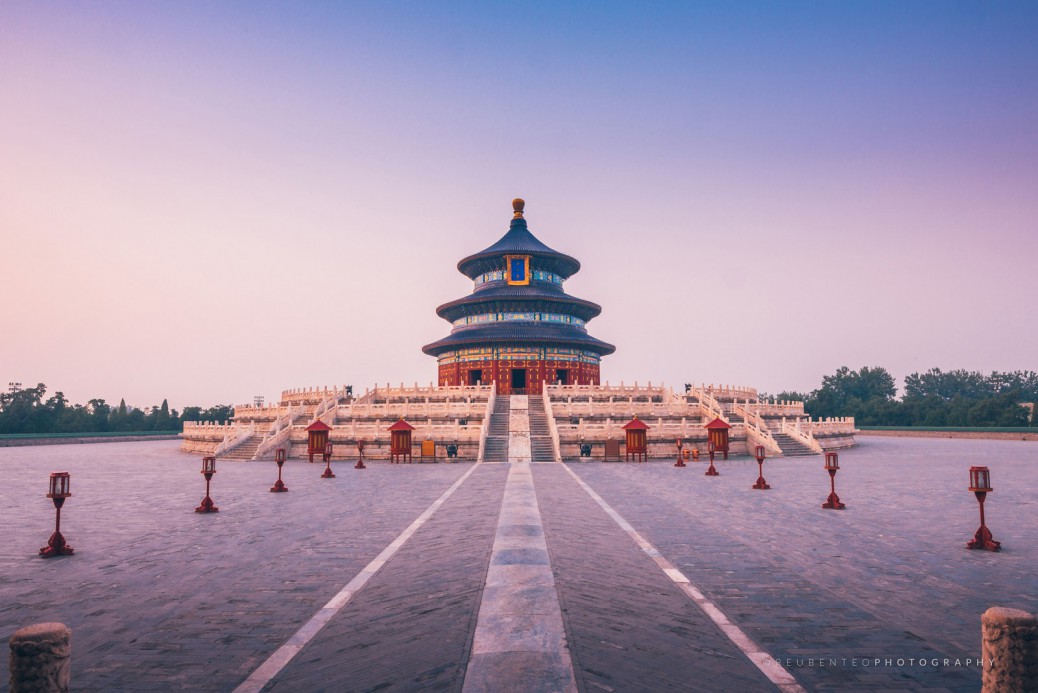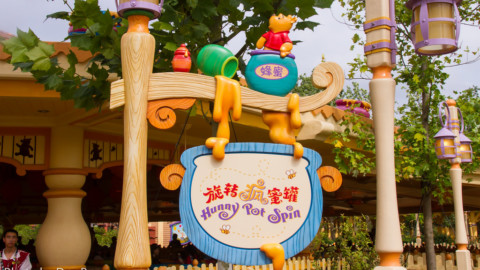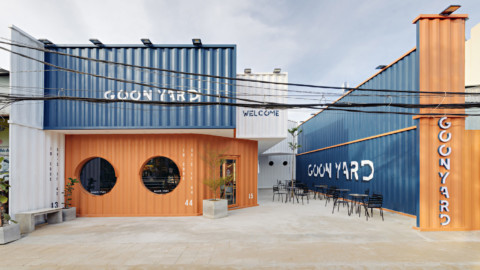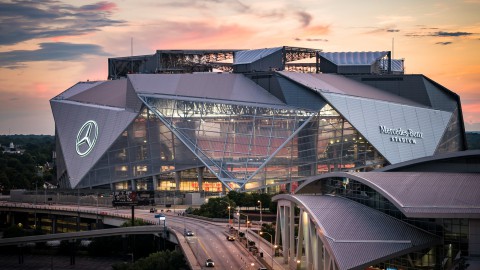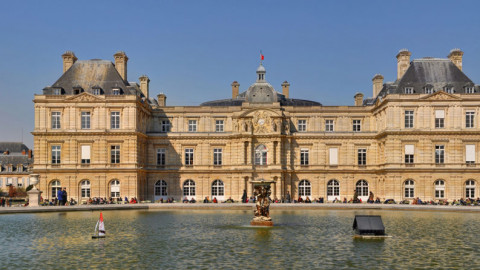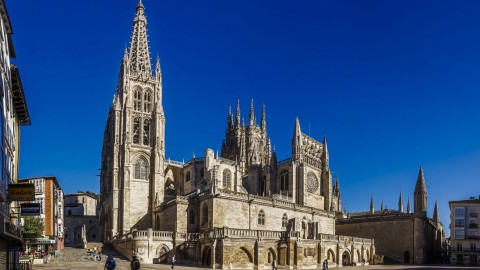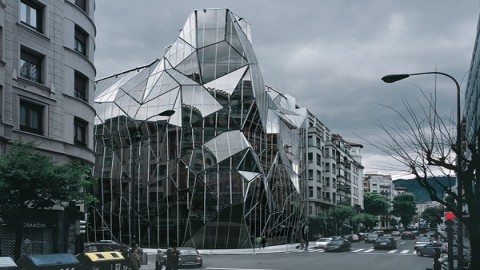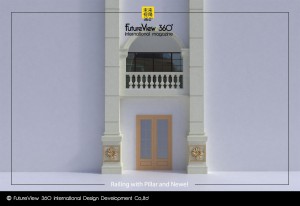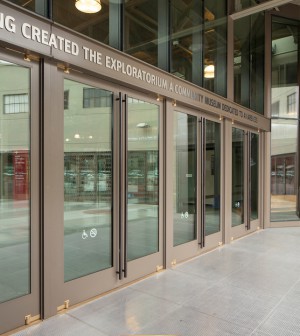Temple of Heaven 天壇
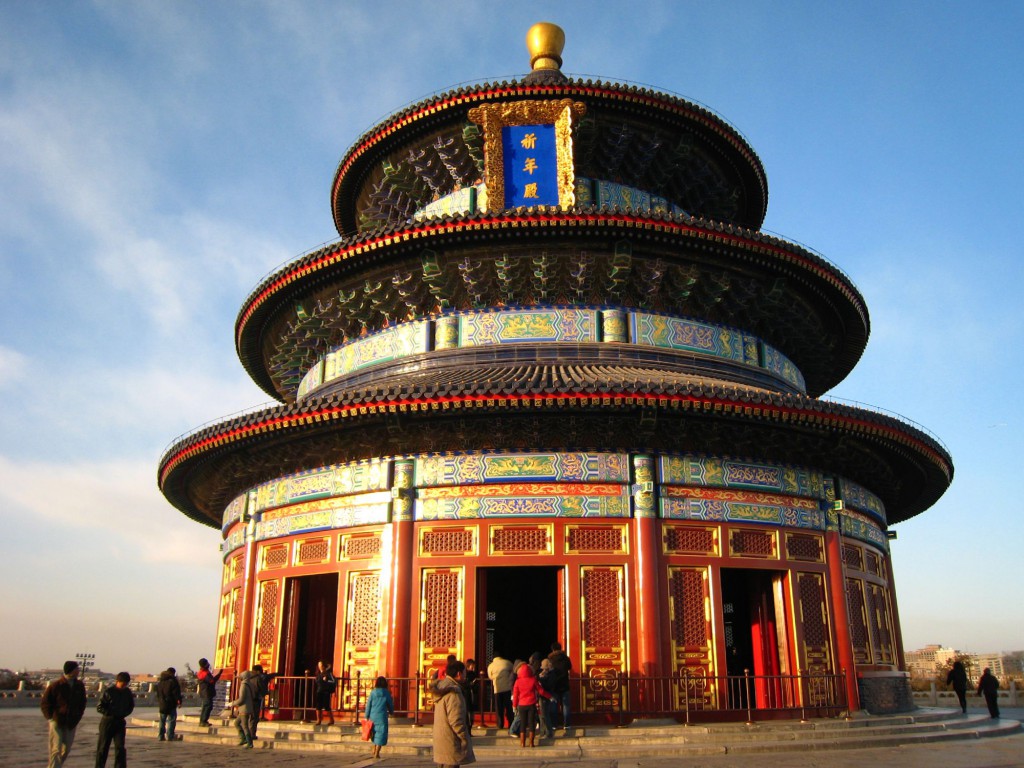
The Temple of Heaven (Chinese: 天壇; pinyin: Tiāntán) is an imperial complex of religious buildings situated in the southeastern part of central Beijing. The complex was visited by the Emperors of the Ming and Qing dynasties for annual ceremonies of prayer to Heaven for good harvest.
天壇(中文:天壇;拼音:天壇)是位於北京市中心東南部的宗教建築群。 明清皇帝參觀了這座建築群,每年都會向天堂祈禱,以獲取豐收。
Location:Dongcheng, Beijing, China
Coordinates:39.8822°N 116.4066°ECoordinates: 39.8822°N 116.4066°E
Official name: Temple of Heaven: an Imperial Sacrificial Altar in Beijing
Type:Cultural
Region:Asia-Pacific
地點:中國北京東城
坐標:39.8822°N 116.4066°ECoordinates:39.8822°N 116.4066°E
官方名稱:天壇:北京的帝國祭壇
類型:文化
地區:亞太
The temple complex was constructed from 1406 to 1420 during the reign of the Yongle Emperor, who was also responsible for the construction of the Forbidden City in Beijing. The complex was extended and renamed Temple of Heaven during the reign of the Jiajing Emperor in the 16th century. Jiajing also built three other prominent temples in Beijing, the Temple of the Sun (日壇) in the east, the Temple of Earth (地壇) in the north, and the Temple of Moon (月壇) in the west. The Temple of Heaven was renovated in the 18th century under the Qianlong Emperor. By then, the state budget was insufficient, so this was the last large-scale renovation of the temple complex in imperial times.
The temple was occupied by the Anglo-French Alliance during the Second Opium War. In 1900, during the Boxer Rebellion, the Eight Nation Alliance occupied the temple complex and turned it into the force’s temporary command in Beijing, which lasted for one year. The occupation desecrated the temple and resulted in serious damage to the building complex and the garden. Robberies of temple artifacts by the Alliance were also reported. With the downfall of the Qing, the temple complex was left un-managed. The neglect of the temple complex led to the collapse of several halls in the following years.
In 1914, Yuan Shikai, then President of the Republic of China, performed a Ming prayer ceremony at the temple, as part of an effort to have himself declared Emperor of China. In 1918 the temple was turned into a park and for the first time open to the public.
The Temple of Heaven was inscribed as a UNESCO World Heritage Site in 1998 and was described as “a masterpiece of architecture and landscape design which simply and graphically illustrates a cosmogony of great importance for the evolution of one of the world’s great civilizations…” as the “symbolic layout and design of the Temple of Heaven had a profound influence on architecture and planning in the Far East over many centuries.”
寺廟建築群建於1406年至1420年,在永樂皇帝統治期間,他還負責北京紫禁城的建設。該建築群在16世紀嘉靖皇帝統治時期延伸並更名為天壇。嘉靖還在北京建造了另外三座著名的寺廟,東面是日壇,北面是地壇,西面是月壇。天壇於18世紀在幹隆皇帝的統治下進行了翻新。到那時,國家預算不足,所以這是帝國時期寺廟建築群的最後一次大規模翻修。
在第二次鴉片戰爭期間,這座寺廟被英法聯盟佔領。 1900年,在義和團運動期間,八國聯盟佔領了寺廟建築群並將其變成了北京部隊的臨時指揮部,持續了一年。佔領褻瀆了寺廟,對建築群和花園造成了嚴重破壞。還報告了聯盟對寺廟文物的搶劫。隨著清朝的垮台,寺廟建築群沒有得到管理。在接下來的幾年中,對寺廟建築群的忽視導致了幾個大廳的倒塌。
1914年,當時的中華民國總統袁世凱在寺廟舉行了明代祈禱儀式,作為努力讓自己宣佈為中國皇帝的一部分。 1918年,寺廟變成了一個公園,並首次向公眾開放。
天壇於1998年被列為聯合國教科文組織世界遺產,被描述為“建築和景觀設計的傑作,簡單而圖形化地展示了一個對世界偉大文明之一的演變具有重要意義的宇宙觀……”因為“天壇的象徵性佈局和設計對遠東地區的建築和規劃影響了很多世紀。”
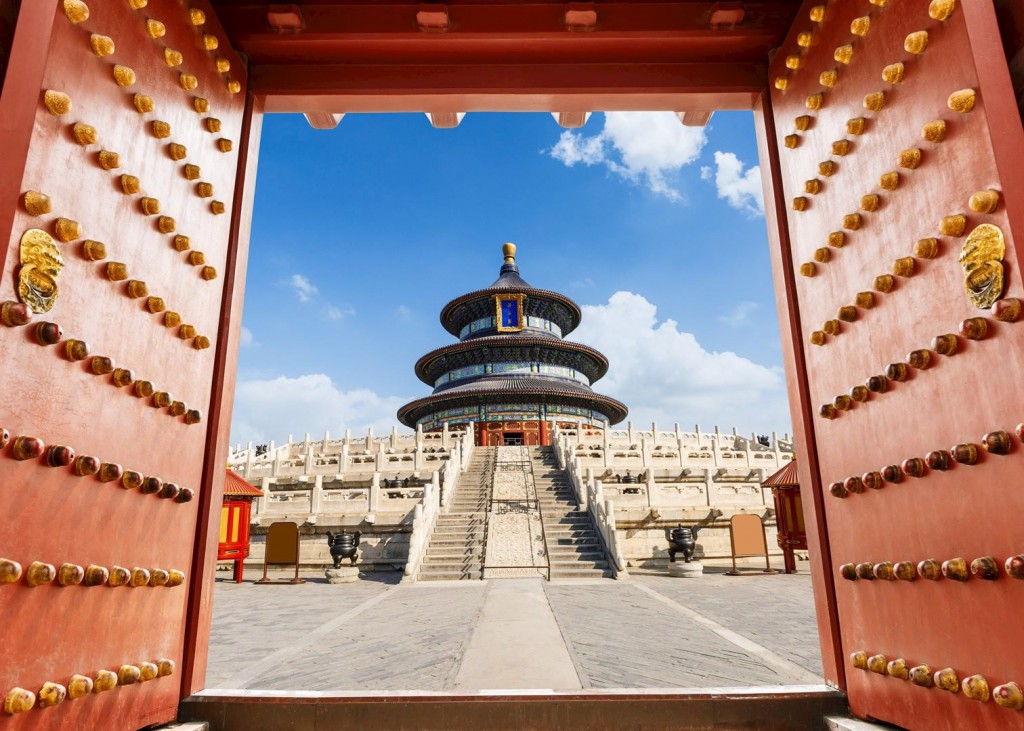
The Temple grounds cover 2.73 km2 (1.05 sq mi) of parkland and comprises three main groups of constructions, all built according to strict philosophical requirements:
-The Hall of Prayer for Good Harvests (祈年殿) is a magnificent triple-gabled circular building, 36 m (118 ft) in diameter and 38 m (125 ft) tall, built on three levels of marble stone base, where the Emperor prayed for good harvests. The building is completely wooden, with no nails. The original building was burned down by a fire caused by lightning in 1889. The current building was re-built several years after the incident.
-The Imperial Vault of Heaven (皇穹宇) is a single-gabled circular building, built on a single level of marble stone base. It is located south of the Hall of Prayer for Good Harvests and resembles it, but is smaller. It is surrounded by a smooth circular wall, the Echo Wall, that can transmit sounds over large distances. The Imperial Vault is connected to the Hall of Prayer by the Vermilion Steps Bridge, a 360-meter-long (1,180 ft) raised walkway that slowly ascends from the Vault to the Hall of Prayer. The dome for this building also has no crossbeams to support the dome.
-The Circular Mound Altar (圜丘坛) is the altar proper, located south of the Imperial Vault of Heaven. It is an empty circular platform on three levels of marble stones, each decorated by lavishly carved dragons. The numbers of various elements of the Altar, including its balusters and steps, are either the sacred number nine or its nonuples. The center of the altar is a round slate called the Heart of Heaven (天心石) or the Supreme Yang (太阳石), where the Emperor prayed for favorable weather. Thanks to the design of the altar, the sound of the prayer will be reflected by the guardrail, creating significant resonance, which was supposed to help the prayer communicate with Heaven. The Altar was built in 1530 by the Jiajing Emperor and rebuilt in 1740.
寺廟佔地面積2.73平方公里(1.05平方英里)的公園,包括三組主要建築,均按照嚴格的哲學要求建造:
– 祈年殿(Praan for Good Harvests)是一座宏偉的三角形圓形建築,直徑36米(118英尺),高38米(125英尺),建在三層大理石石基上,皇帝在那裡祈求豐收。該建築完全是木製的,沒有釘子。原建築在1889年被閃電引起的火災燒毀。目前的建築物在事件發生幾年後重建。
– 皇穹宇(Imperial Vault of Heaven)是一座單一的山形圓形建築,建在一層單一的大理石石基上。它位於祈禱大廳的南部,與其相似,但更小。它周圍環繞著光滑的圓形牆壁Echo Wall,可以遠距離傳輸聲音。皇家穹頂通過朱紅步橋連接到祈禱大廳,這是一條360米長(1,180英尺)的升高走道,從穹頂緩緩上升到祈禱大廳。這座建築的圓頂也沒有支撐圓頂的橫梁。
– The Circular Mound祭壇(圜丘壇)是位於皇家天穹南部的祭壇。這是一個空曠的圓形平台,分為三層大理石,每塊石頭都由雕刻精美的龍雕刻而成。祭壇的各種元素的數量,包括其欄杆和步驟,要么是神聖的九號,要么是它的非元素。祭壇的中心是一個圓形的石板,稱為天心石(天心石)或太陽石(太陽石),皇帝在那裡祈求有利的天氣。由於祭壇的設計,祈禱的聲音將由護欄反映出來,產生顯著的共鳴,這應該有助於禱告與天堂溝通。祭壇於1530年由嘉靖皇帝建造,並於1740年重建。
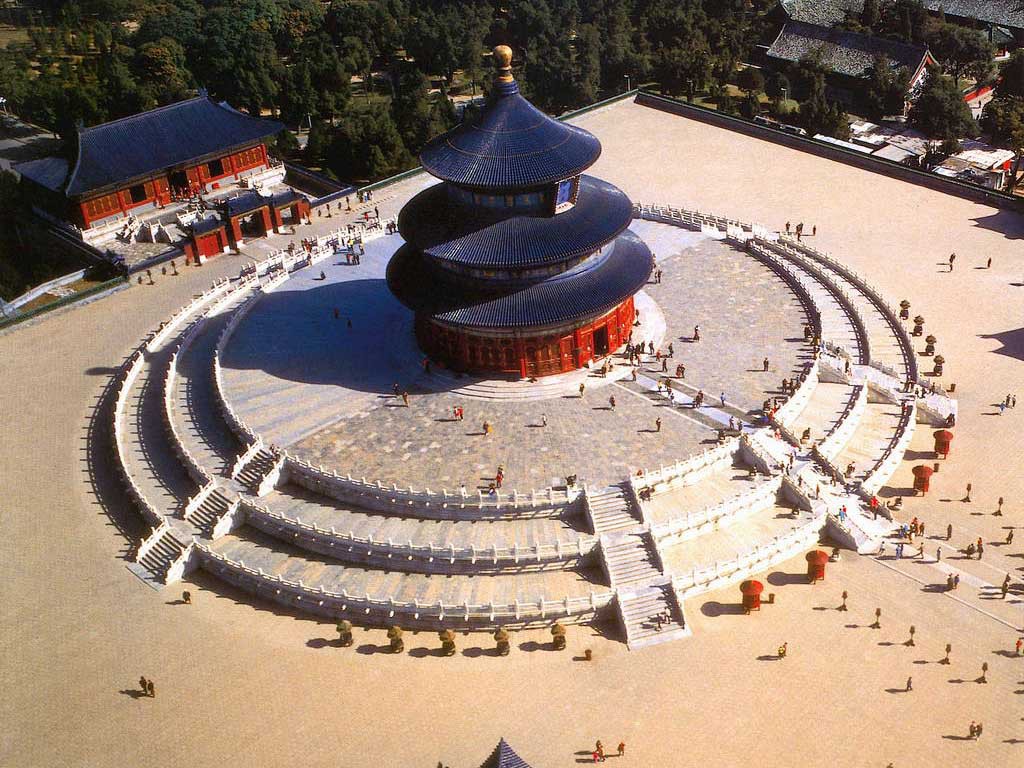

In ancient China, the Emperor of China was regarded as the Son of Heaven, who administered earthly matters on behalf of, and representing, heavenly authority. To be seen to be showing respect to the source of his authority, in the form of sacrifices to heaven, was extremely important. The temple was built for these ceremonies, mostly comprising prayers for good harvests.
Twice a year the Emperor and all his retinue would move from the Forbidden City through Beijing to encamp within the complex, wearing special robes and abstaining from eating meat. No ordinary Chinese was allowed to view this procession or the following ceremony. In the temple complex the Emperor would personally pray to Heaven for good harvests. The highpoint of the ceremony at the winter solstice was performed by the Emperor on the Earthly Mount. The ceremony had to be perfectly completed; it was widely held that the smallest of mistakes would constitute a bad omen for the whole nation in the coming year.
在中國古代,中國的皇帝被視為天子,他代表天堂的權威管理屬世的事。 被視為以犧牲天堂的形式表現出對他權威來源的尊重是非常重要的。 這座寺廟是為這些儀式而建的,主要是祈禱豐收。
皇帝和他的所有隨從一年兩次將從紫禁城穿過北京,進入綜合體內,穿著特殊的長袍,不吃肉。 沒有普通中國人被允許觀看這次遊行或下一次儀式。 在寺廟建築群中,皇帝將親自向天堂祈禱,以獲得豐收。 冬至儀式的最高點是由皇帝在地球山上進行的。 儀式必須完美; 人們普遍認為,最小的錯誤將在未來一年對整個國家構成不良預兆。
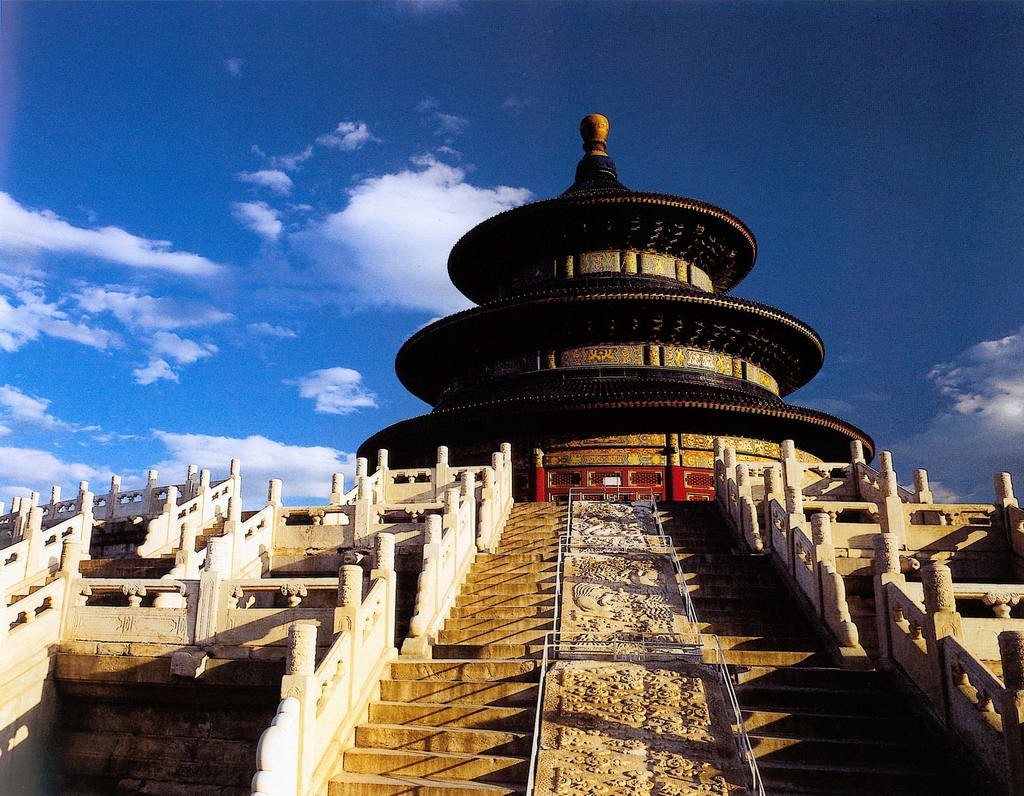
Earth was represented by a square and Heaven by a circle; several features of the temple complex symbolize the connection of Heaven and Earth, of circle and square. The whole temple complex is surrounded by two cordons of walls; the outer wall has a taller, semi-circular northern end, representing Heaven, and a shorter, rectangular southern end, representing the Earth. Both the Hall of Prayer for Good Harvests and the Circular Mound Altar are round, each standing on a square yard, again representing Heaven and Earth. The number nine represents the Emperor and is evident in the design of the Circular Mound Altar: a single round marmor plate is surrounded by a ring of nine plates, then a ring of 18 plates, and so on for a total of nine surrounding rings, the outermost having 9×9 plates.
The Hall of Prayer for Good Harvests has four inner, twelve middle and twelve outer pillars, representing the four seasons, twelve months and twelve traditional Chinese hours respectively. Combined together, the twelve middle and twelve outer pillars represent the traditional solar terms. All the buildings within the Temple have special dark blue roof tiles, representing the Heaven.
The Seven-Star Stone Group, east of the Hall of Prayer for Good Harvest, represents the seven peaks of Taishan Mountain, a place of Heaven worship in classical China.
There are four main supportive, dragon pillars each representing a season. The structure, held up by these dragons, imitates the style of an ancient Chinese royal palace. Twelve inner pillars symbolize the lunar months, and it is thought that the twelve outer pillars refer to the 12 two-hour periods of the day.
地球由一個正方形和天堂一個圓圈代表;寺廟建築群的幾個特徵象徵著天地,圓形和廣場的聯繫。整個寺廟群由兩條圍牆包圍;外牆有一個較高的半圓形北端,代表天堂,一個較短的矩形南端,代表地球。收穫祈禱殿和圓形土墩祭壇都是圓形的,每個都站在一個方形的院子裡,再次代表天地。九號代表皇帝,在圓形土墩祭壇的設計中顯而易見:一個圓形的夯板周圍環繞著九個板塊的環,然後是18個板塊的環,依此類推,共有九個環形圍欄,最外層有9×9板。
好收成祈禱殿有四個內部,十二個中間和十二個外柱,分別代表四季,十二個月和十二個繁體中文小時。結合在一起,十二個中柱和十二個外柱代表傳統的太陽能術語。寺內的所有建築都有特殊的深藍色屋頂瓦片,代表天堂。
七星石集團位於豐收祈禱殿的東面,代表著泰山的七座山峰,是中國古典的天堂崇拜之地。
有四個主要的支柱,每個代表一個賽季的龍柱。由這些龍支撐的結構模仿了中國古代皇宮的風格。十二根內柱象徵著農曆月,人們認為十二根外柱指的是一天中的12個兩小時。
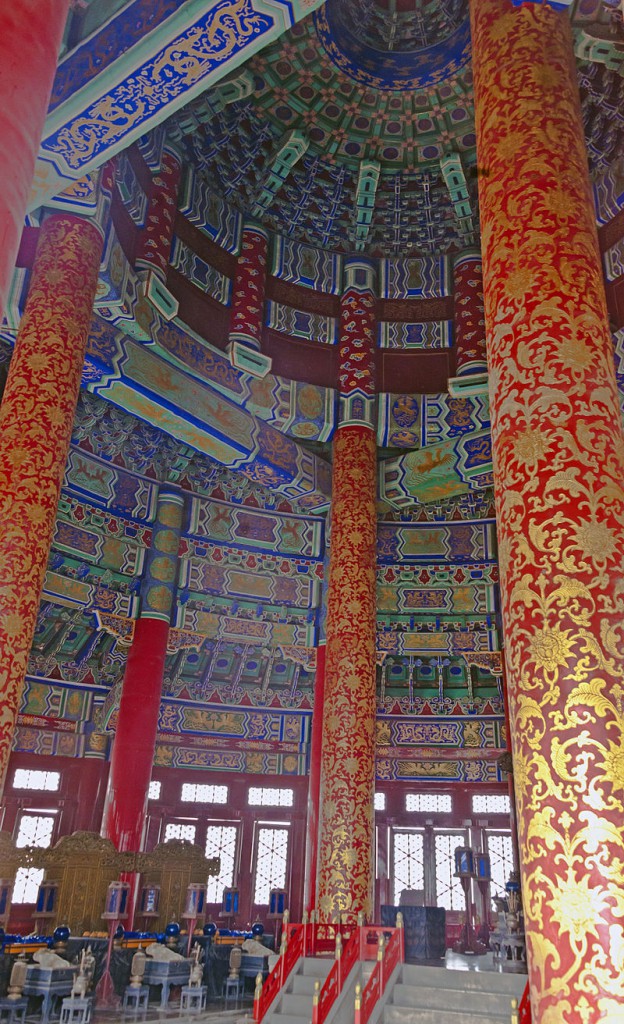
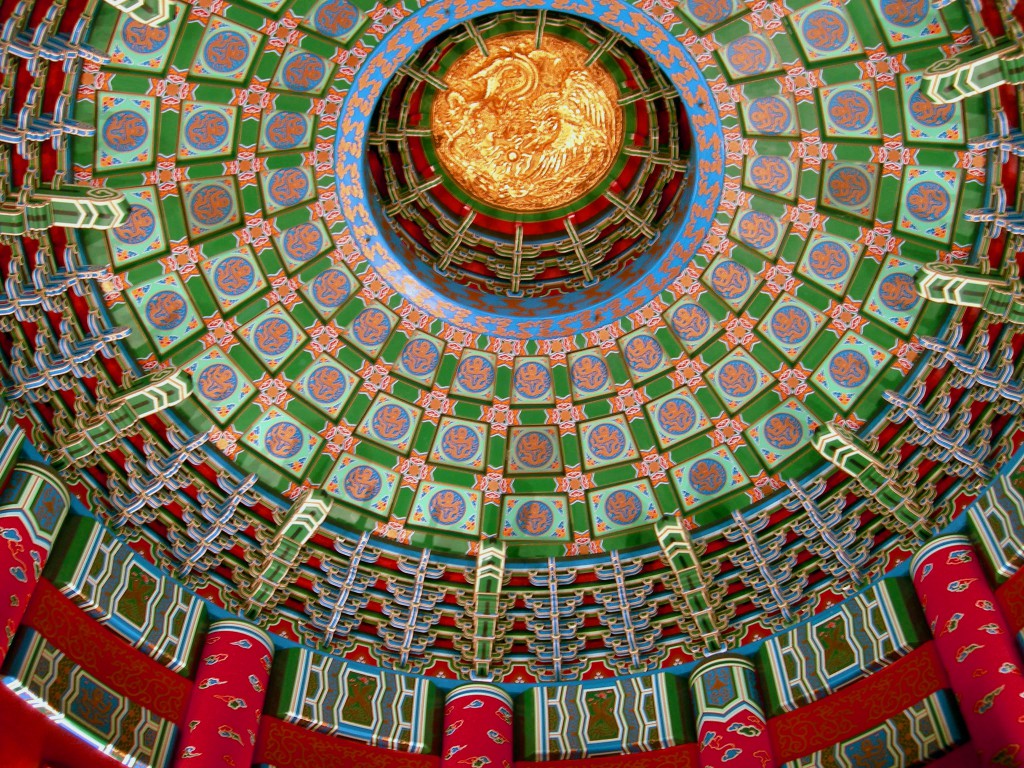
FROM:https://en.wikipedia.org/wiki/Temple_of_Heaven
FROM:Temple of Heaven & Lama Temple, Bejing, China in HD
Don’t you think it’s addictive?
Want to know more about the beauty of architecture?
Come and join our members to explore the beauty of architectural design.
覺得看得不過癮嗎?
想要知道更多建築之美嗎?
快來加入我們的會員,一同探索建築設計之美。
The above article is purely for appreciation and sharing purposes, as well as the construction of new technology and the public can be in-depth understanding of the information at the same time there are sources, will be able to query, no use of the document as a commercial transaction, if illegal, please inform the We will immediately remove the site, thank you for cooperation.
以上文章純粹作為欣賞及分享用途,以及將建築新型技術傳遞給與大眾能夠深入了解,同時資料還有來源,將可查詢,絕無使用該文件資料作為商業交易行為,如有違法請務必告知該網站我們將立即處理撤除,謝謝合作。

